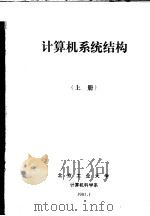《计算机系统体系结构 第3版》
| 作者 | (美)(M.M.马尼奥)M.Morris Mano著 编者 |
|---|---|
| 出版 | 北京:清华大学出版社 |
| 参考页数 | 523 |
| 出版时间 | 1998(求助前请核对) 目录预览 |
| ISBN号 | 7302028311 — 求助条款 |
| PDF编号 | 87512698(仅供预览,未存储实际文件) |
| 求助格式 | 扫描PDF(若分多册发行,每次仅能受理1册) |
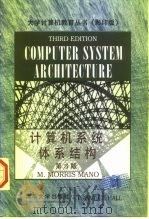
CHAPTER ONE Digital Logic Circuits1
1-1 Digital Computers1
1-2 Logic Gates4
1-3 Boolean Algebra7
Complement of a Function10
1-4 Map Simplification11
Product-of-Sums Simplification14
Don't-Care Conditions16
1-5 Combinational Circuits18
Half-Adder19
Full-Adder20
1-6 Flip-Flops22
SR Flip-Flop22
D Flip-Flop23
JK Flip-Flop24
T Flip-Flop24
Edge-Triggered Flip-Flops25
Excitation Tables27
1-7 Sequential Circuits28
Flip-Flop Input Equations28
State Table30
State Diagram31
Design Example32
Design Procedure36
Problems37
References39
CHAPTER TWO Digital Components41
2-1 Integrated Circuits41
2-2 Decoders43
NAND Gate Decoder45
Decoder Expansion46
Encoders47
2-3 Multiplexers48
2-4 Registers50
Register with Parallel Load51
2-5 Shift Registers53
Bidirectional Shift Register with Parallel Load53
2-6 Binary Counters56
Binary Counter with Parallel Load58
2-7 Memory Unit58
Random-Access Memory60
Read-Only Memory61
Types of ROMs62
Problems63
References65
CHAPTER THREE Data Representation.67
3-1 Data Types67
Number Systems68
Octal and Hexadecimal Numbers69
Decimal Representation72
Alphanumeric Representation73
3-2 Complements74
(r-1) s Complement75
(r s)Complement75
Subtraction of Unsigned Numbers76
3-3 Fixed-Point Representation77
Integer Representation78
Arithmetic Addition79
Arithmetic Subtraction80
Overflow80
Decimal Fixed-Point Representation81
3-4 Floating-Point Representation83
3-5 Other Binary Codes84
Gray Code84
Other Decimal Codes85
Other Alphanumeric Codes86
3-6 Error Detection Codes87
Problems89
References91
CHAPTER FOUR Register Transfer and Microoperations93
4-1 Register Transfer Language93
4-2 Register Transfer95
4-3 Bus and Memory Transfers97
Three-State Bus Buffers100
Memory Transfer101
4-4 Arithmetic Microoperations102
Binary Adder103
Binary Adder-Subtractor104
Binary Incrementer105
Arithmetic Circuit106
4-5 Logic Microoperations108
List of Logic Microoperations109
Hardware Implementation111
Some Applications111
4-6 Shift Microoperations114
Hardware Implementation115
4-7 Arithmetic Logic Shift Unit116
Problems119
References122
CHAPTER FIVE Basic Computer Organization and Design123
5-1 Instruction Codes123
Stored Program Organization125
Indirect Address126
5-2 Computer Registers127
Common Bus System129
5-3 Computer Instructions132
Instruction Set Completeness134
5-4 Timing and Control135
5-5 Instruction Cycle139
Fetch and Decode139
Determine the Type of Instruction141
Register-Reference Instruction143
5-6 Memory-Reference Instructions145
AND to AC145
ADD to AC146
LDA: Load to AC146
STA: Store AC147
BUN: Branch Unconditionally147
BSA: Branch and Save Return Address147
ISZ: Increment and Skip If Zero149
Control Flowchart149
5-7 Input-Output and Interrupt150
Input-Output Configuration151
Input-Output Instructions152
Program Interrupt153
Interrupt Cycle156
5-8 Complete Computer Description157
5-9 Design of Basic Computer157
Control Logic Gates160
Control of Registers and Memory160
Control of Single Flip-Flops162
Control of Common Bus162
5-10 Design of Accumulator Logic164
Control of AC Register165
Adder and Logic Circuit166
Problems167
References171
CHAPTER SIX Programming the Basic Computer173
6-1 Introduction173
6-2 Machine Language174
6-3 Assembly Language179
Rules of the Language179
An Example181
Translation to Binary182
6-4 The Assembler183
Representation of Symbolic Program in Memory184
First Pass185
Second Pass187
6-5 Program Loops190
6-6 Programming Arithmetic and Logic Operations192
Multiplication Program193
Double-Precision Addition196
Logic Operations197
Shift Operations197
6-7 Subroutines198
Subroutines Parameters and Data Linkage200
6-8 Input-Output Programming203
Character Manipulation204
Program Interrupt205
Problems208
References211
CHAPTER SEVEN Microprogrammed Control213
7-1 Control Memory213
7-2 Address Sequencing216
Conditional Branching217
Mapping of Instruction219
Subroutines220
7-3 Microprogram Example220
Computer Configuration220
Microinstruction Format222
Symbolic Microinstructions225
The Fetch Routine226
Symbolic Microprogram227
Binary Microprogram229
7-4 Design of Control Unit231
Microprogram Sequencer232
Problems235
Reference238
CHAPTER EIGHT Central Processing Unit241
8-1 Introduction241
8-2 General Register Organization242
Control Word244
Examples of Microoperations246
8-3 Stack Organization247
Register Stack247
Memory Stack249
Reverse Polish Notation251
Evaluation of Arithmetic Expressions253
8-4 Instruction Formats255
Three-Address Instructions258
Two-Address Instructions258
One--Address Instructions259
Zero--Address Instructions259
RISC Instructions259
8-5 Addressing Modes260
Numerical Example264
8-6 Data Transfer and Manipulation266
Data Transfer Instructions267
Data Manipulation Instructions268
Arithmetic Instructions269
Logical and Bit Manipulation Instructions270
Shift Instructions271
8-7 Program Control273
Status Bit Conditions274
Conditional Branch Instructions275
Subroutine Call and Return278
Program Interrupt279
Types of Interrupts281
8-8 Reduced Instruction Set Computer (RISC)282
CISC Characteristics283
RISC Characteristics284
Overlapped Register Windows285
Berkeley RISC 1288
Problems291
References297
CHAPTER NINE Pipeline and Vector Processing299
9-1 Parallel Processing299
9-2 Pipelining302
General Considerations304
9-3 Arithmetic Pipeline307
9-4 Instruction Pipeline310
Example: Four-Segment Instruction Pipeline311
Data Dependency313
Handling of Branch Instructions314
9-5 RISC Pipeline315
Example: Three-Segment Instruction Pipeline316
Delayed Load317
Delayed Branch318
9-6 Vector Processing319
Vector Operations321
Matrix Multiplication322
Memory Interleaving324
Supercomputers325
9-7 Array Processors326
Attached Array Processor326
SIMD Array Processor327
Problems329
References330
CHAPTER TEN Computer Arithmetic333
10-1 Introduction333
10-2 Addition and Subtraction334
Addition and Subtraction with Signed-Magnitude Data335
Hardware Implementation336
Hardware Algorithm337
Addition and Subtraction with Signed-Z s Complement Data338
10-3 Multiplication Algorithms340
Hardware Implementation for Signed-Magnitude Data341
Hardware Algorithm342
Booth Multiplication Algorithm343
Array Multiplier346
10-4 Division Algorithms348
Hardware Implementation for Signed-Magnitude Data349
Divide Overflow351
Hardware Algorithm352
Other Algorithms353
10-5 Floating-Point Arithmetic Operations354
Basic Considerations354
Register Configuration357
Addition and Subtraction358
Multiplication360
Division362
10-6 Decimal Arithmetic Unit363
BCD Adder365
BCD Subtraction368
10-7 Decimal Arithmetic Operations369
Addition and Subtraction371
Multiplication371
Division374
Floating-Point Operations376
Problems376
References380
CHAPTER ELEVEN Input-Output Organization381
11-1 Peripheral Devices381
ASCII Alphanumeric Characters383
11-2 Input-Output Interface385
I/O Bus and Interface Modules386
I/O versus Memory Bus387
Isolated versus Memory-Mapped I/O388
Example of I/O Interface389
11-3 Asynchronous Data Transfer391
Strobe Control391
Handshaking393
Asynchronous Serial Transfer396
Asynchronous Communication Interface398
First-In, First-Out Buffer400
11-4 Modes of Transfer402
Example of Programmed I/O403
Interrupt-Initiated I/O406
Software Considerations406
11-5 Priority Interrupt407
Daisy-Chaining Priority408
Parallel Priority Interrupt409
Priority Encoder411
Interrupt Cycle412
Software Routines413
Initial and Final Operations414
11-6 Direct Memory Access (DMA)415
DMA Controller416
DMA Transfer418
11-7 Input-Output Processor (IOP)420
CPU-IOP Communication422
IBM 370 I/O Channel423
Intel 8098 IOP427
11-8 Serial Communication429
Character-Oriented Protocol432
Transmission Example433
Data Transparency436
Bit-Oriented Protocol437
Problems439
References442
CHAPTER TWELVE Memory Organization445
12-1 Memory Hierarchy445
12-2 Main Memory448
RAM and ROM Chips449
Memory Address Map450
Memory Connection to CPU452
12-3 Auxiliary Memory452
Magnetic Disks454
Magnetic Tape455
12-4 Associative Memory456
Hardware Organization457
Match Logic459
Read Operation460
Write Operation461
12-5 Cache Memory462
Associative Mapping464
Direct Mapping465
Set-Associative Mapping467
Writing into Cache468
Cache Initialization469
12-6 Virtual Memory469
Address Space and Memory Space470
Address Mapping Using Pages472
Associative Memory Page Table474
Page replacement475
12-7 Memory Management Hardware476
Segmented-Page Mapping477
Numerical Example479
Memory Protection482
Problems483
References486
CHAPTER THIRTEEN Multiprocessors489
13-1 Characteristics of Multiprocessors489
13-2 Interconnection Structures491
Time-Shared Common Bus491
Multiport Memory493
Crossbar Switch494
Multistage Switching Network496
Hypercube Interconnection498
13-3 Interprocessor Arbitration500
System Bus500
Serial Arbitration Procedure502
Parallel Arbitration Logic503
Dynamic Arbitration Algorithms505
13-4 Interprocessor Communication and Synchronization506
Interprocessor Synchronization507
Mutual Exclusion with a Semaphore508
13-5 Cache Coherence509
Conditions for Incoherence509
Solutions to the Cache Coherence Problem510
Problems512
References514
Index515
1998《计算机系统体系结构 第3版》由于是年代较久的资料都绝版了,几乎不可能购买到实物。如果大家为了学习确实需要,可向博主求助其电子版PDF文件(由(美)(M.M.马尼奥)M.Morris Mano著 1998 北京:清华大学出版社 出版的版本) 。对合法合规的求助,我会当即受理并将下载地址发送给你。
高度相关资料
-

- 计算机体系结构
- 1988 长沙:国防科技大学出版社
-
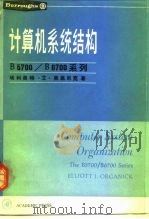
- 计算机系统结构 B5700/B6700系列
- 中国外贸咨询与技术服务公司
-
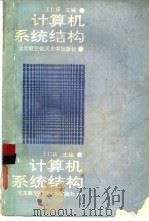
- 计算机系统结构
- 1992 北京:北京航空航天大学出版社
-
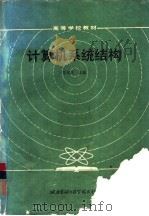
- 计算机系统结构
- 1984 西北电讯工程学院出版社
-
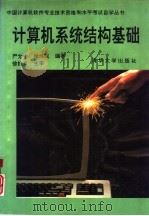
- 计算机系统结构基础
- 1993 北京:清华大学出版社
-

- 计算机系统结构 第2版
- 1984 西安:西安电子科技大学出版社
-

- 实用计算机体系结构
- 1982 北京:人民邮电出版社
-
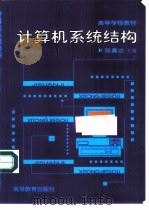
- 计算机系统结构
- 1996 北京:高等教育出版社
-

- 美神之囚
- 1990 上海:上海文艺出版社
-
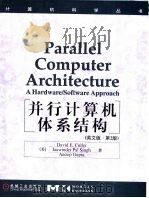
- 并行计算机体系结构 英文版·第2版
- 1999 北京:机械工业出版社
-

- 计算机系统结构
- 1998 北京:清华大学出版社
-
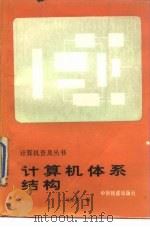
- 计算机体系结构
- 1988 北京:中国铁道出版社
-
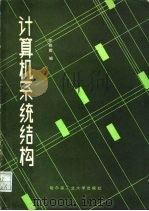
- 计算机系统结构
- 1985 黑龙江省:黑龙江工业出版社
-

- 计算机系统结构
- 1997 重庆:重庆大学出版社
提示:百度云已更名为百度网盘(百度盘),天翼云盘、微盘下载地址……暂未提供。➥ PDF文字可复制化或转WORD
